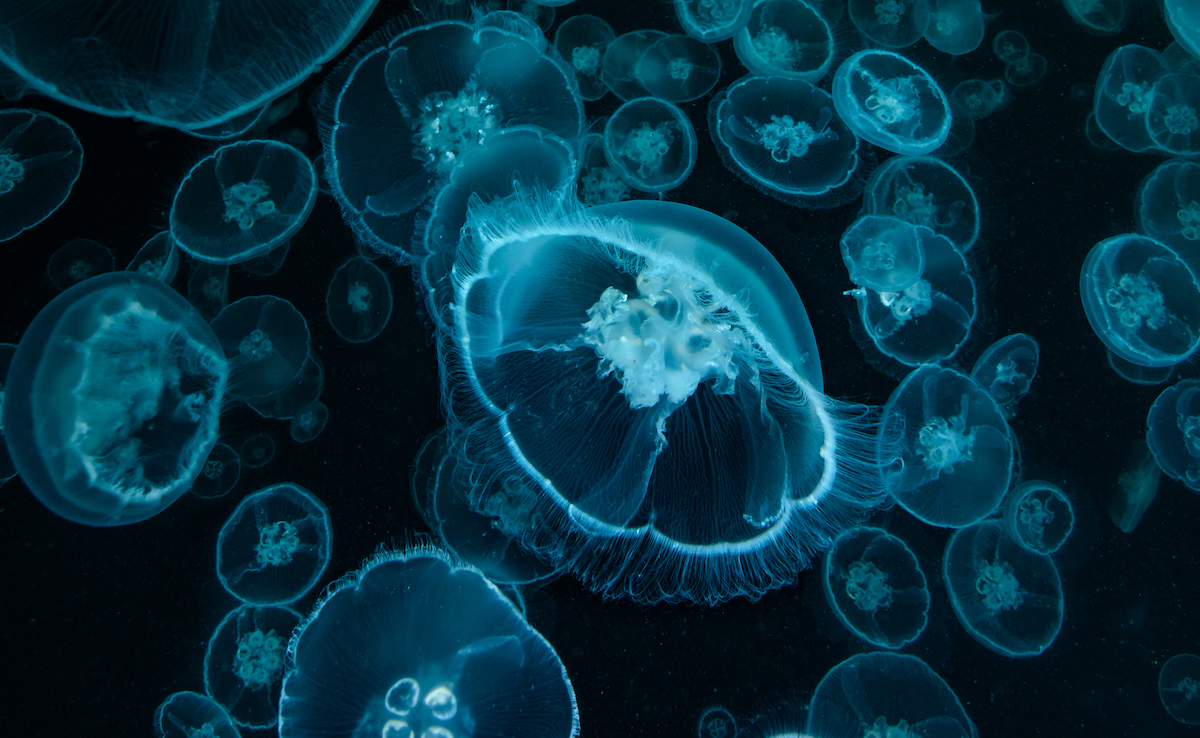What is a Moon Jellyfish?
I don’t think you’re ready for this jelly

Moon jellies have a special place in my heart. Once on a family vacation, we wrapped up a hike at Acadia National Park to find hundreds of moon jellies floating near the shore. It was a magical sight. It felt as if we had crossed over into some alien dimension, the rocky coastline transformed into a sea filled with these other-worldly creatures.
What do moon jellyfish look like?
Moon jellyfish get their name from their translucent bell-shape that looks a bit like a full moon. They are best identified by four purple glowing circles on the top that loop around in a clover-like formation. They have short wispy tentacles that hang below and tend to float just below the surface of the water.
Can they sting me?
Moon jellyfish can sting with their tentacles. Don’t let this scare you away from these beautiful creatures! Their sting has little effect on humans beyond slight discomfort and a rash that will last only a few hours. But if you happen to be a plankton or mollusk that has learned to read and found access to the internet, well, I have bad news: That jellyfish sting is going to immobilize you to become the jellyfish’s next meal. Learn more about how jellyfish sting.
How do moon jellyfish move?
Jellyfish don’t need fins or skeletons to swim; they use their bells. They are able to create a pocket of water to project themselves. As a moon jellyfish opens and contracts its bell, it creates a vortex, several vortices, in fact, that create a high-pressure wall of water that becomes its runway to blast off. Scientists are studying this unique method of locomotion to inspire the ways future underwater robots might move.
What eats moon jellyfish?
Moon jellyfish are considered a delectable snack by all sorts of turtles, birds and fish. Their clear gelatinous structure might not look nutritious, but moon jellyfish contain some fatty acids crucial to growth and reproduction. Plus, they are pretty slow, making it easy for their predators to have a lazy afternoon lunch.
Moon jellyfish in SPACE?
Yes, living up to their lunar namesake, moon jellies took a trip to space! In 1991 NASA launched over 2,478 jellyfish polyps (a.k.a. jellyfish babies) on a trip that was out of this world. They wanted to see how being raised in a low gravity situation would change jellyfish behavior once they were back on Earth. This would provide insights on how human space babies might be affected since both jellyfish and humans need gravity to orientate themselves. There are calcium sulfate crystals in a moon jellyfish’s bell that move with gravity, telling the jellyfish whether it is moving up or down. We humans also have calcium crystals in our inner ears that help us understand gravity’s pull. Turns out the space jelly babies (which should be the name of the next Muppet movie) did turn out to have issues navigating on Earth after being raised in a place without gravity.
As Elton John told us in “Rocket Man,” space “ain’t the kind of place to raise your kids.”